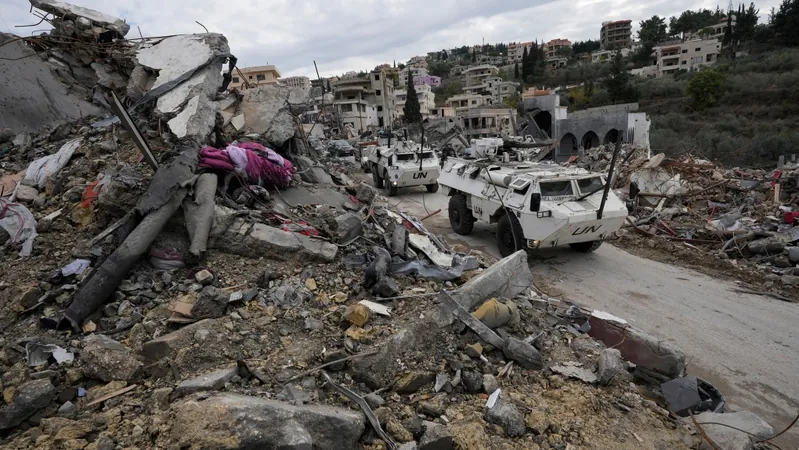
Tensions Resurface as Israel Conducts Airstrike on Lebanon Just After Ceasefire
2024-11-28
Author: Sophie
BEIRUT - In a significant escalation of hostilities, the Israeli military launched its first airstrike on southern Lebanon on Thursday, just a day after a newly brokered ceasefire was put in place. The strike was reportedly aimed at a Hezbollah rocket storage facility, raising fresh concerns over the stability of the ceasefire agreement.
Despite the ceasefire, Israel accused Hezbollah of violating the terms, stating that they had observed suspicious activity involving vehicles approaching several areas in southern Lebanon. Consequently, Israel conducted artillery fire against these alleged breaches. While no casualties have been confirmed from the airstrike itself, Lebanese state media reported that at least two civilians were wounded in separate incidents where Israeli fire targeted areas near the border town of Markaba.
The ceasefire—negotiated with the intervention of the United States and France—was intended to halt 14 months of intense conflict that escalated after Hamas launched an attack against Israel on October 7, 2023. In response, Hezbollah had expressed solidarity with Hamas, leading to weeks of sustained rocket fire from Lebanon into Israeli territory. The fighting culminated in a full-blown war that turned southern Lebanon into a battleground and resulted in a dire humanitarian crisis.
As part of the ceasefire terms, Hezbollah militants were required to withdraw north of the Litani River, while the Israeli Defense Forces (IDF) were to return to their side of the border. This agreement included provisions for a buffer zone to be monitored by Lebanese troops and UN peacekeepers. Yet, recent exchanges of fire have raised doubts about whether both parties will abide by the terms.
In northern Israel, reports of Israeli drones and artillery strikes echoed through the region, as the military vowed to "actively enforce violations of the ceasefire." There have been strong warnings from Israeli officials urging civilians to avoid areas near Hezbollah activity and emphasizing that they retain the right to respond to any violations.
In Lebanon, military officials indicated that their forces would gradually deploy to the south as Israeli troops begin to withdraw, but the logistics of this transition remain uncertain amidst the backdrop of ongoing violence.
Casualty figures from the conflict have been staggering, with Lebanese health authorities reporting more than 3,760 deaths, many of which were civilians. The toll on Israel was not insignificant either, as more than 70 people were killed, including a notable number of civilians and Israeli soldiers engaged in operations against Hezbollah.
Displacement has also reached crisis levels, with about 1.2 million individuals forced to flee their homes in Lebanon and approximately 50,000 displaced Israelis still apprehensive about returning. Many neighborhoods close to the border are ghost towns, with homes damaged and infrastructure in ruin.
As the situation unfolds, both countries remain on high alert. The international community watches closely, hoping for a sustainable peace but acutely aware of the fragile conditions that could erupt into further violence at any moment. Will this ceasefire hold, or is another cycle of conflict inevitable? Only time will tell.









 Brasil (PT)
Brasil (PT)
 Canada (EN)
Canada (EN)
 Chile (ES)
Chile (ES)
 España (ES)
España (ES)
 France (FR)
France (FR)
 Hong Kong (EN)
Hong Kong (EN)
 Italia (IT)
Italia (IT)
 日本 (JA)
日本 (JA)
 Magyarország (HU)
Magyarország (HU)
 Norge (NO)
Norge (NO)
 Polska (PL)
Polska (PL)
 Schweiz (DE)
Schweiz (DE)
 Singapore (EN)
Singapore (EN)
 Sverige (SV)
Sverige (SV)
 Suomi (FI)
Suomi (FI)
 Türkiye (TR)
Türkiye (TR)